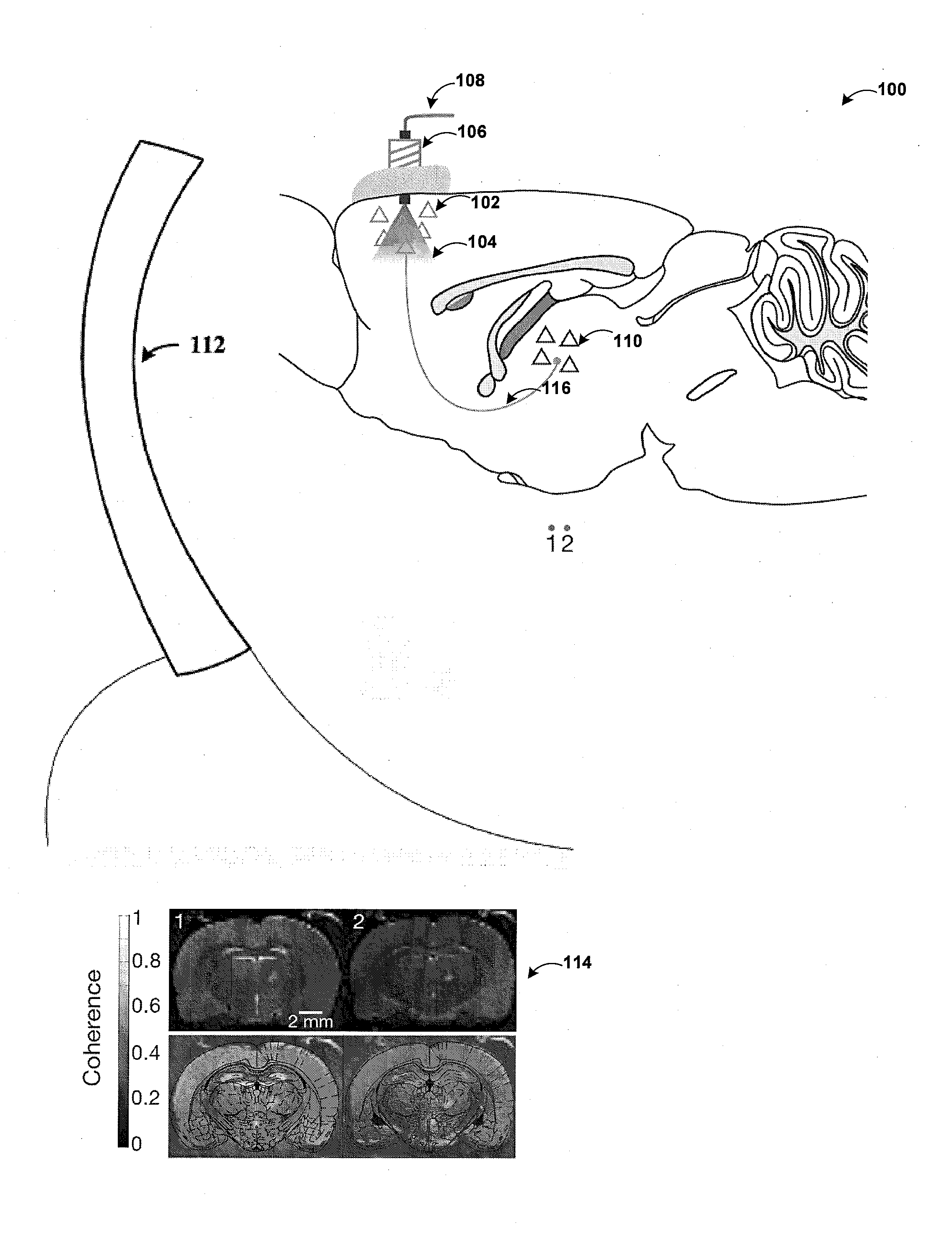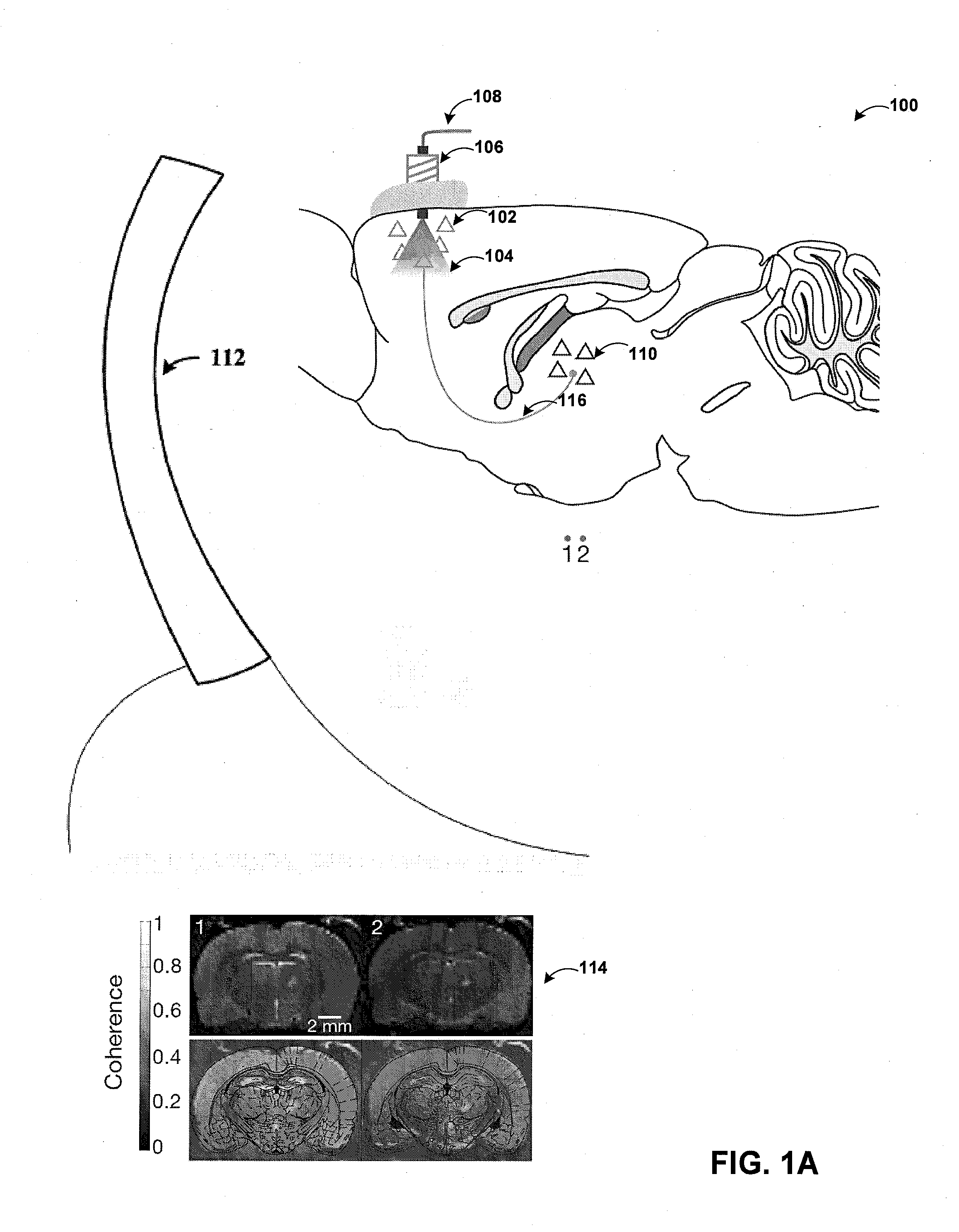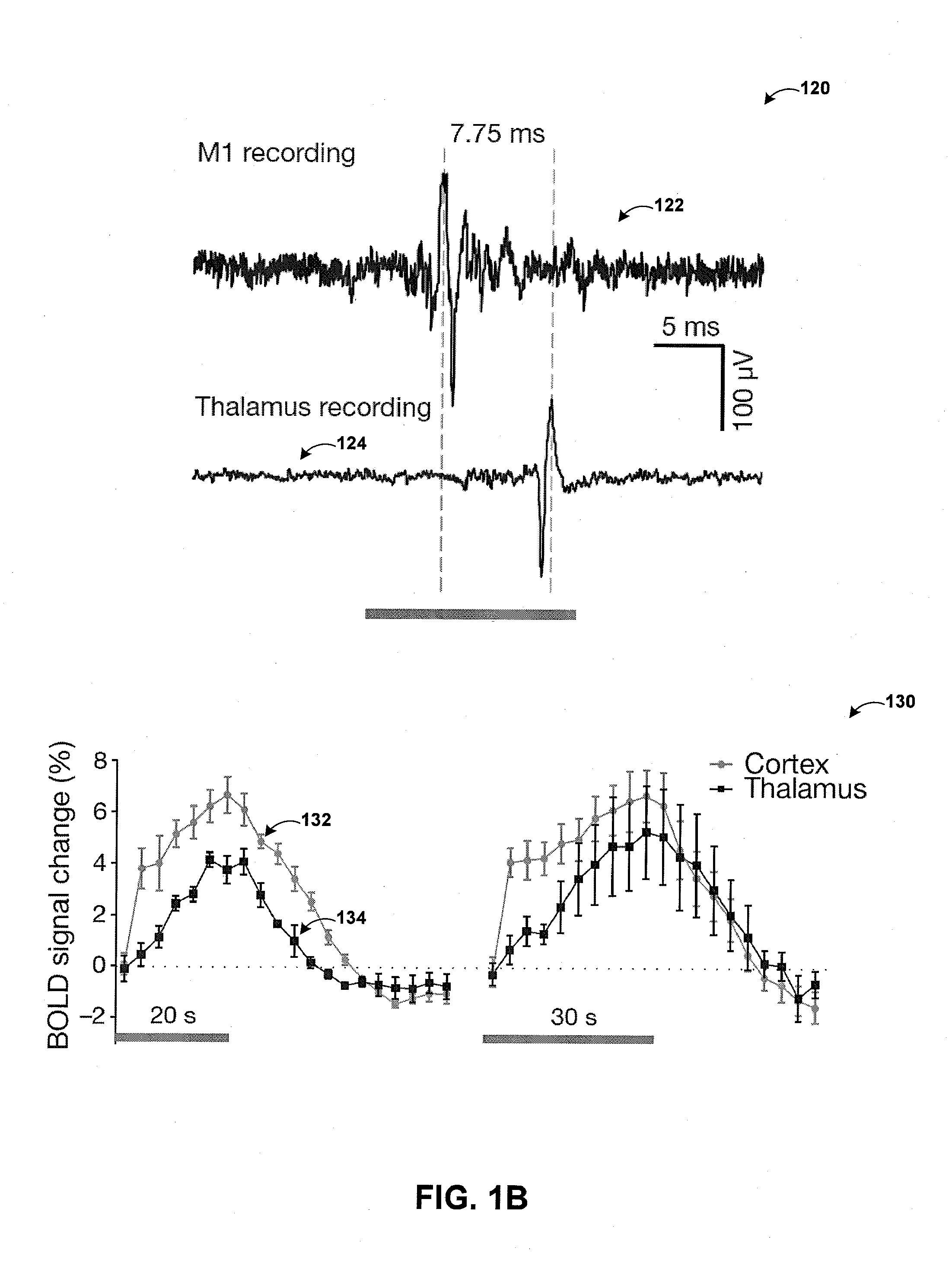Optogenetic Magnetic Resonance Imaging
a technology of optogenetic magnetic resonance and imaging, applied in the field of non-invasive whole brain imaging, can solve problems such as confusion in fmri interpretation
- Summary
- Abstract
- Description
- Claims
- Application Information
AI Technical Summary
Problems solved by technology
Method used
Image
Examples
examples
[0051]Despite a rapidly-growing scientific and clinical brain imaging literature based on functional magnetic resonance imaging (fMRI) using blood oxygenation level-dependent (BOLD)′ signals, it remains controversial whether BOLD signals in a particular region can be caused by activation of local excitatory neurons. This difficult question is central to the interpretation and utility of BOLD, with major significance for fMRI studies in basic research and clinical applications. Using a novel integrated technology unifying optogenetic control of inputs with high-field fMRI signal readouts, we show here that specific stimulation of local CaMKIIn-expressing excitatory neurons, either in the neocortex or thalamus, elicits positive BOLD signals at the stimulus location with classical kinetics. We also show that optogenetic fMRI (ofMRI) allows visualization of the causal effects of specific cell types defined not only by genetic identity and cell body location, but also by axonal projectio...
PUM
 Login to View More
Login to View More Abstract
Description
Claims
Application Information
 Login to View More
Login to View More - R&D
- Intellectual Property
- Life Sciences
- Materials
- Tech Scout
- Unparalleled Data Quality
- Higher Quality Content
- 60% Fewer Hallucinations
Browse by: Latest US Patents, China's latest patents, Technical Efficacy Thesaurus, Application Domain, Technology Topic, Popular Technical Reports.
© 2025 PatSnap. All rights reserved.Legal|Privacy policy|Modern Slavery Act Transparency Statement|Sitemap|About US| Contact US: help@patsnap.com



